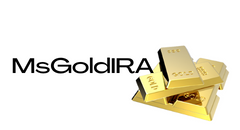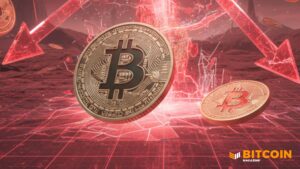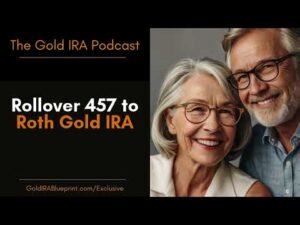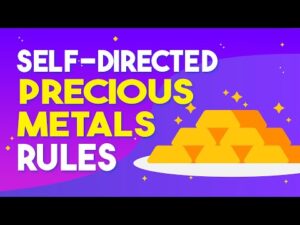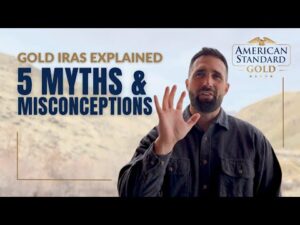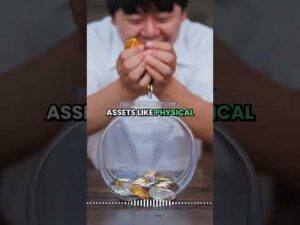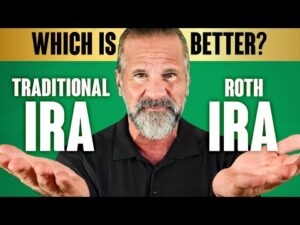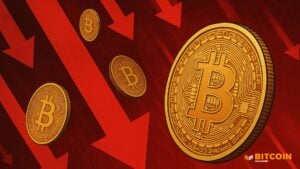
Have you ever stopped to ponder about the intricate dance between money and value? It's like a waltz where every step represents the essence of an exchange. Money, the silent partner in this grand ball, dictates the tempo of every transaction, weaving a story of price and worth. Let's delve into the captivating realm where even Robinson Crusoe grasped the significance of money.
The Enigmatic Price of Money
The Allure of Marketability
Picture this: in the bustling marketplace of society, money reigns as the monarch of exchange. Its throne is built on marketability, the key that unlocks economic transactions. Just like a rare gem that captivates all eyes, money's value lies in its acceptance by the masses. The more sought after it is, the more it reigns supreme in the economy.
The Puzzle of Purchasing Power
Deciphering the price of money is akin to solving a cryptic riddle. Unlike goods with clear supply and demand dynamics, money plays coy by disguising its own value. It's a conundrum wrapped in an enigma. Yet, at its core lies the essence of purchasing power, the magic wand that transforms desire into reality.
Inflation and the Mirage of Idle Money
The Dance of Time Preference
Imagine time as a river, flowing steadily through the landscape of choices. People, like skilled navigators, decide whether to save, spend, or invest based on their time preference. It's a delicate balance between present pleasure and future gain. Even idle money has a purpose, a guardian angel against the storm of uncertainty.
The Veil of Consumer Price Index
Beneath the cloak of the Consumer Price Index lies a truth shrouded in shadows. Inflation, the silent predator, preys on the unsuspecting, distorting economic realities. The index dances with numbers, concealing the subtle erosion of purchasing power. It's a masquerade ball where the masked truth whispers tales of hidden agendas.
The Mythical Origins of Money
The Barter Economy Revelation
Travel back to the dawn of trade, where barter reigned supreme. The journey from commodity to money was a metamorphosis of value. What once held practical worth now blossomed into a beacon of exchange. Mises' Regression Theorem unravels this enigma, painting a portrait of money's genesis in the vibrant tapestry of markets.

The Golden Legacy
Gold, the Midas of currencies, ascended to the throne of money through its virtues. Durable, divisible, and scarce, it stood the test of time. Banknotes, once mere echoes of gold's glory, now dance in the shadows of fiat currencies. The ghost of gold's past whispers secrets of integrity lost in the labyrinth of modern finance.
The Perilous Journey of Fiat Currency
The Siren Song of Monetary Expansion
Enter the realm of fiat currencies, where value is but a mirage in the desert of debt. Each dollar birthed from the womb of loans, a puppet in the play of central banks. Debt and inflation waltz hand in hand, a tango of wealth extraction veiled in economic jargon.
The Looming Shadow of Fiat's Demise
As the clock ticks, fiat currencies march towards an uncertain fate. Hyperinflation lurks in the shadows, ready to claim its victims. The Cantillon effect, a silent thief in the night, siphons wealth from the honest to enrich the connected. Fiat's final act unfolds, a tragedy of value lost in the sands of time.
As we navigate the labyrinth of money's mysteries, remember that the tale of Robinson Crusoe echoes through the ages. Just like him, we stand at the crossroads of value and price, charting our course through the winds of change. Let us embrace the wisdom of the past to forge a future where money is not just a symbol but a beacon of integrity and trust.
Frequently Asked Questions
What is a Precious Metal IRA?
A precious metal IRA allows you to diversify your retirement savings into gold, silver, platinum, palladium, rhodium, iridium, osmium, and other rare metals. These metals are known as “precious” because they are rare and extremely valuable. These are excellent investments that will protect your wealth from inflation and economic instability.
Bullion is often used for precious metals. Bullion is the physical metal.
You can buy bullion through various channels, including online retailers, large coin dealers, and some grocery stores.
With a precious metal IRA, you invest in bullion directly rather than purchasing shares of stock. This means you'll receive dividends every year.
Precious metal IRAs are not like regular IRAs. They don't need paperwork and don't have to be renewed annually. Instead, you pay a small percentage tax on the gains. Plus, you can access your funds whenever you like.
What Should Your IRA Include in Precious Metals?
When investing in precious metals, the most important thing to know is that they aren't just for wealthy people. You don't have to be rich to invest in them. There are many methods to make money off of silver and gold investments.
You might consider purchasing physical coins, such as bullion bars and rounds. Also, you could buy shares in companies producing precious metals. You may also be interested in an IRA transfer program offered by your retirement provider.
You can still get benefits from precious metals regardless of what choice you make. They are not stocks but offer long-term growth.
And unlike traditional investments, they tend to increase in value over time. If you decide to make a sale of your investment in the future, you will likely realize more profit than with traditional investments.
How does a gold IRA work?
For people who are looking to invest in precious materials, Gold Ira account accounts provide tax-free investments.
You can purchase physical gold bullion coins anytime. To start investing in gold, it doesn't matter if you are retired.
An IRA lets you keep your gold for life. Your gold holdings will not be subject to tax when you are gone.
Your gold will be passed on to your heirs, without you having to pay capital gains taxes. You don't need to include your gold in your final estate report, as it isn't part of the estate.
You'll first have to set up an individual retirement account (IRA) to open a gold IRA. Once you've completed this step, an IRA administrator will be appointed to your account. This company acts in the role of a middleman between your IRS agent and you.
Your gold IRA Custodian will manage the paperwork and submit all necessary forms to IRS. This includes filing annual reports.
Once you've established your gold IRA, you'll be able to purchase gold bullion coins. The minimum deposit required to purchase gold bullion coins is $1,000 However, you'll receive a higher interest rate if you put in more.
You'll have to pay taxes if you take your gold out of your IRA. If you take out the whole amount, you'll be subject to income taxes as well as a 10 percent penalty.
A small percentage may mean that you don't have to pay taxes. However, there are exceptions. There are some exceptions. For instance, if you take out 30% or more from your total IRA assets, federal income taxes will apply plus a 20 percent penalty.
You shouldn't take out more then 50% of your total IRA assets annually. You could end up with severe financial consequences.
What are the fees for an IRA that holds gold?
A monthly fee of $6 for an Individual Retirement Account is charged. This includes account maintenance fees and investment costs for your chosen investments.
If you want to diversify, you may be required to pay extra fees. These fees will vary depending upon the type of IRA chosen. Some companies offer free checking accounts, but charge monthly fees to open IRA accounts.
Most providers also charge an annual management fee. These fees can range from 0% up to 1%. The average rate is.25% annually. These rates can often be waived if a broker, such as TD Ameritrade, is involved.
What Precious Metals Can You Invest in for Retirement?
It is gold and silver that are the best precious metal investment. They are both easy to trade and have been around for years. These are great options to diversify your portfolio.
Gold: One of the oldest forms of currency, gold, is one of mankind's most valuable. It is also extremely safe and stable. This makes it a good option to preserve wealth in uncertain times.
Silver: Investors have always loved silver. It's an ideal choice for those who prefer to avoid volatility. Silver is more volatile than gold. It tends to rise rather than fall.
Platinium: Platinum is another form of precious metal that's becoming increasingly popular. It is very durable and resistant against corrosion, much like silver and gold. It is however more expensive than its counterparts.
Rhodium: Rhodium can be used in catalytic convertors. It is also used to make jewelry. It is relatively affordable when compared to other types.
Palladium – Palladium is an alternative to platinum that's more common but less scarce. It's also less expensive. For these reasons, it's become a favorite among investors looking to add precious metals to their portfolios.
Can I have physical gold in my IRA
Not only is gold paper currency, but it's also money. Gold is an asset people have used for thousands years as a place to store value and protect their wealth from economic uncertainty and inflation. Today, investors invest in gold as part a diversified portfolio. This is because gold tends do better in financial turmoil.
Many Americans now invest in precious metals. It's not guaranteed that you'll make any money investing gold, but there are several reasons it might be worthwhile to add gold to retirement funds.
One reason is that gold has historically performed better than other assets during periods of financial panic. Gold prices rose nearly 100 percent between August 2011 and early 2013, while the S&P 500 fell 21 percent over the same period. During these turbulent market times, gold was among few assets that outperformed the stocks.
Another benefit to investing in gold? It has virtually zero counterparty exposure. If your stock portfolio goes down, you still own your shares. However, if you have gold, your value will rise even if the company that you invested in defaults on its loans.
Gold provides liquidity. This means that you can sell gold anytime, regardless of whether or not another buyer is available. Gold is liquid and therefore it makes sense to purchase small amounts. This allows one to take advantage short-term fluctuations within the gold price.
What is the tax on gold in Roth IRAs?
A tax assessment for an investment account will be based on the current market value, and not what you paid initially. If you invest $1,000 in mutual funds or stocks and then later sell them, all gains are subjected to taxes.
The money can be withdrawn tax-free if it's deposited in a traditional IRA (or 401(k)). Only earnings from capital gains and dividends are subject to tax. These taxes do not apply to investments that have been held for more than one year.
Each state has its own rules regarding these accounts. Maryland is an example of this. You must withdraw your funds within 60 calendar days of turning 59 1/2. Massachusetts allows you to delay withdrawals until April 1. And in New York, you have until age 70 1/2 . To avoid penalties, plan ahead so you can take distributions at the right time.
Statistics
- Indeed, several financial advisers interviewed for this article suggest you invest 5 to 15 percent of your portfolio in gold, just in case. (aarp.org)
- Gold is considered a collectible, and profits from a sale are taxed at a maximum rate of 28 percent. (aarp.org)
- Instead, the economy improved, stocks rebounded, and gold plunged, losing 28 percent of its value in 2013. (aarp.org)
- Contribution limits$6,000 (49 and under) $7,000 (50 and up)$6,000 (49 and under) $7,000 (50 and up)$58,000 or 25% of your annual compensation (whichever is smaller) (lendedu.com)
- If you accidentally make an improper transaction, the IRS will disallow it and count it as a withdrawal, so you would owe income tax on the item's value and, if you are younger than 59 ½, an additional 10% early withdrawal penalty. (forbes.com)
External Links
bbb.org
investopedia.com
- Do You Need a Gold IRA to Get Retirement?
- What are the Options Types, Spreads and Example. Risk Metrics
